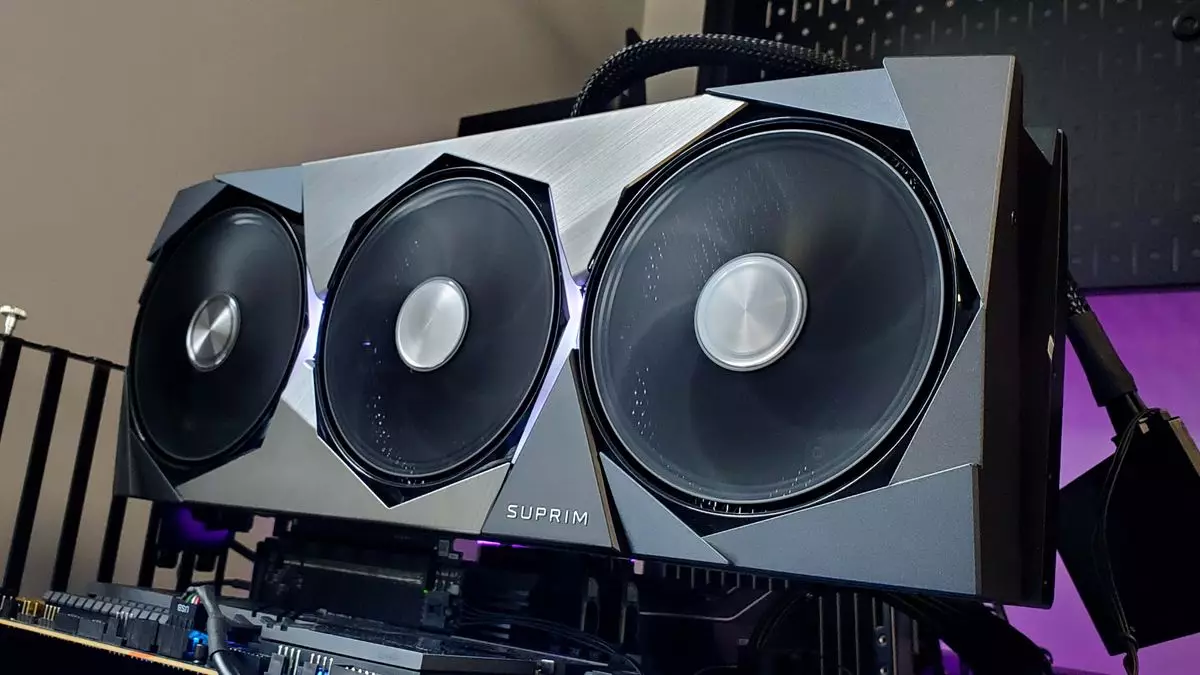The Nvidia RTX 50-series entry into the graphics card market was anticipated with much fanfare, yet the reality has proven to be far less glamorous. With stock shortages, inflated prices, and performance claims that seem to be inflated themselves, the launch of the RTX 50-series might be regarded as a significant letdown. The initial excitement surrounding new hardware has quickly soured to disappointment as gamers and creators alike scramble to understand what went wrong. The tech community’s scrutiny of Nvidia’s pricing, stock levels, and the very foundation of their marketing promises raises serious questions about their approach and market strategy.
Price Adjustments and Market Reactions
Interestingly, amidst this turbulent landscape, Nvidia has decided to announce a price reduction on select RTX 50-series Founders Edition graphics cards, although the reductions appear to be minor and only apply to specific regions such as Europe and the UK. This decision seems reactive, perhaps intended to mitigate growing player annoyance and discontent regarding pricing. For example, in Germany, potential buyers are looking at a modest 4.3%-4.6% drop in prices for models like the RTX 5070 and RTX 5080. However, prices for the RTX 5070 Ti remain unchanged—likely due to the absence of a Founders Edition altogether.
Frustration mounts as these price cuts do little to alleviate the ongoing issue of stock shortages. With retailers frequently posting “out of stock” signs next to these cards, the question arises: what value do these price changes hold when the products remain largely unavailable? The idea of having lower MSRPs is undermined by the reality of empty shelves, leaving consumers craving meaningful access to hardware more than ever.
A Competing Landscape
The bitterness surrounding Nvidia’s uninspired launch is compounded when we progress across the competitive landscape to AMD. Riding the momentum from an efficient release cycle, AMD’s RX 9070 series is reportedly enjoying considerable sales success, supposedly racking up over 200,000 sold units. Nevertheless, pricing issues and stock shortages plague both camps, painting a similarly grim picture in the realm of availability. With retailers marking up GPU prices far beyond any reasonable MSRP, the struggle for gamers continues. It appears that despite the competition, both Nvidia and AMD are entangled in a web of supply chain dysfunction and inflated consumer costs.
If AMD can boast performance sales, the question remains whether Nvidia’s price adjustments and continual hope for a supply increase can positively influence their standing in the marketplace. It’s a chess game of sorts, one where consumers end up as pawns.
Impact on the Gaming Community
For the gaming community, particularly those who rely on cutting-edge technology for their livelihood or passion projects, the availability and pricing of the RTX 50-series becomes more than just a nuisance—it’s a significant barrier. Promises of high-performing graphics cards that offer new realms of gaming experiences quickly dissipate when faced with reality. The experience does not just affect sales numbers; it taints community sentiment and erodes brand loyalty over time. Gamers are often willing to invest in quality, but when that quality is accompanied by unpredictability in both stock and pricing, the resolve to stay loyal can falter.
The Bigger Picture: Economics and Ethics
As we investigate the implications of Nvidia’s price cuts and stock struggles, we also delve deeper into the wider economic indicators at play. The falling value of the US dollar may provide a backdrop for these changes, yet it highlights a disconcerting trend that often accompanies new technology product releases: the disconnect between manufacturer pricing strategies and on-ground realities. The ethical considerations surrounding pricing decisions come into play as well, leading to questions about whether companies are prioritizing profit over consumer relationships—an essential aspect that must not be neglected in the modern marketplace.
In essence, the launch of the RTX 50-series serves as a microcosm of the current state of the hardware market, one where competitiveness meets harmful practices. It’s crucial for gamers and industry stakeholders alike to take notice of these patterns, ensuring that demand does not just fuel irresponsible pricing but rather cultivates a dynamic marketplace where quality, availability, and value thrive hand in hand.

